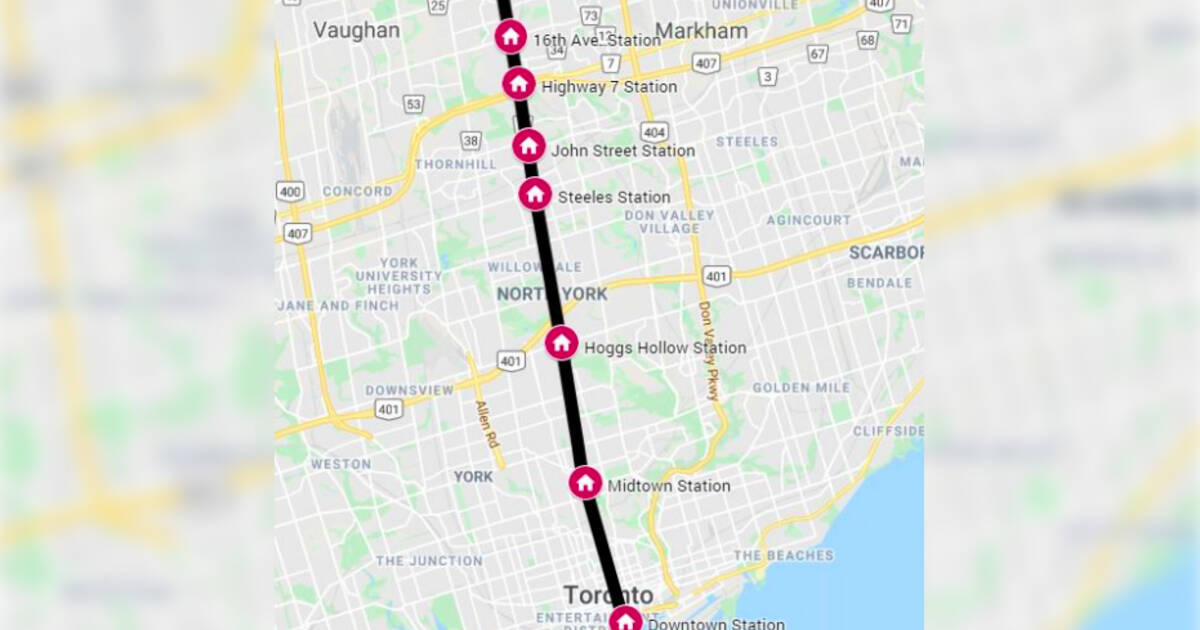Gary Benner P. Eng.
New Member
2 quick thoughts, which probably duplicate things others have said, at least to an extent:
1) Probably this should be in a thread of its own since, even if it goes beyond the fantasy stage, it's a separate project.
2) I like the concept, at a high level, but have a lot of questions about the actual execution. The "problem" is that by creating a totally separate express line, you're forced to locate the tunnels and then the stations away from the existing line and not necessarily where they otherwise make the most sense. So, for example, a Hogg's Hollow station and a Mt. Pleasant-area station make far less sense than stops that interline with the existing Sheppard and Crosstown lines. I suppose that helps people get from A to B but it doesn't necessarily facilitate other policy goals when it comes to intensification, an integrated transit network etc.
I guess we can all spitball where we think stops would make sense.... off the top of my head, I think (assuming the approved extension goes as is), an "Express" service would stop at RHC, Steeles, Finch, Sheppard, Eglinton, St. Clair, Bloor, DRL/Queen and Union. That probably DOESN'T make sense in terms of the practicalities of engineering, but it does make sense in terms of service. So that's the inherent conundrum here, I think.
So, to sum up, maybe the problem is just that I haven't wrapped my head around the notion of this as something entirely different but I think that any express line basically has to offer easy opportunities to transfer both to the "local" Line 1 service (e.g. Maybe you take express from Steeles to Eglinton and then transfer to get to Lawrence or Rosedale) and to the E/W services (Crosstown, Sheppard, Line 2, DRL) or it doesn't make much sense.
My Yonge Express Subway ("YES") concept does include the new line running to Richmond Hill independent of Line 1, so it is relevant to this thread. That being said, the meat of what makes the YES a potential game-changer is what is proposed south of Steeles. I would like to start a separate thread to focus that discussion (and tried to do so) but apparently you need 20 posts in your history to start a new thread.
I think you have to get your head out of the perfect plan for a transit line (with nice connections at all the E/W lines) and look at an option where you can actually build another line on the same right-of-way. We need to get increased capacity to downtown so Line 1 can function. It won't once it is extended north and 905 riders are added. I think connections with shallow YES stations at York Mills, Mt Pleasant Cemetery and possibly Steeles, (if Line 1 is also extended a bit), will provide the necessary connectivity. You just have to switch from YES to Line 1 to get to an E/W line. That is not the end of the world.
